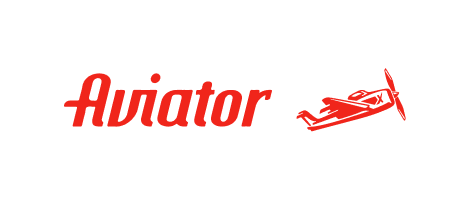Is a Cycling Bike Worth the Cost? Breakdown
When you consider investing in a cycling bike, it's essential to weigh the costs against the benefits. You might think about the initial price tag, but what if a quality bike saves you money in the long run? There are many factors at play, from maintenance costs to performance gains. Curious about how to make the right choice for your cycling journey? Let’s explore what makes a bike truly worth the investment.
Understanding the Price Range of Cycling Bikes
When examining the price range of cycling bikes, it's evident that there are considerable disparities influenced by quality and type. Entry-level road bikes generally start at around $1,000 and can go up to $3,000, a reflection of their performance capabilities.
For those contemplating a second-hand bike purchase, it's advisable to seek options with an original Manufacturer's Suggested Retail Price (MSRP) of at least $1,500. Bikes within this price range typically feature superior components and enhanced reliability.
In contrast, less expensive department store bikes are available for prices ranging from $100 to $500. While these options may be more accessible, investing in quality mid-range used road bikes, which are priced between $1,000 and $2,500, can offer a more beneficial balance of durability and performance.
The Value of Investing in Quality
Investing in a quality cycling bike can lead to a more efficient riding experience and increased long-term satisfaction. The price for high-quality bicycles typically falls between $1,000 and $3,000.
Such bikes are equipped with superior components that can enhance performance and extend durability compared to lower-priced options. Quality bicycles generally offer better frames, gears, brakes, and wheels, which contribute to improved handling and comfort during rides. This can facilitate skill development for both novice and experienced cyclists.
It's important to consider the adage "buy cheap, buy twice," as opting for lower-quality models may result in diminished performance and increased likelihood of breakdowns. This often leads to more frequent replacements and higher overall costs over time.
Ultimately, allocating funds towards a quality bicycle may result in greater enjoyment and a more seamless cycling experience. Investing wisely in a robust bike can serve to optimize both the physical and financial aspects of cycling.
Comparing New and Used Bikes
Choosing between a new and a used bike presents several factors that can influence both your cycling experience and financial considerations.
New bikes typically have a starting price around $1,000, with high-end models reaching over $10,000. This range reflects the latest advancements in technology and design, which can improve performance and comfort.
On the other hand, quality used bikes are generally available in the $1,000 to $2,500 range. These bikes can offer reliable performance at a lower cost compared to their new counterparts.
When considering used options, those with a manufacturer's suggested retail price (MSRP) above $1,500 are advisable, as they tend to have better components and modern features.
Another point to consider is the purchasing source. Buying from a reputable bike shop can provide additional value. Such shops often offer warranties and ensure professional assembly, which can enhance the longevity and reliability of the bike.
For individuals on a budget, exploring certified pre-owned bikes from knowledgeable retailers can be a prudent choice, balancing performance with cost efficiency.
Essential Gear and Accessories Costs
After deciding whether to go for a new or used bike, it's important to consider the essential gear and accessories that contribute to a better cycling experience.
A quality helmet is a fundamental safety item, with prices typically ranging from $50 to $200.
Additionally, cycling apparel, such as padded shorts and jerseys, can vary significantly in cost, generally falling between $100 and $500, depending on the brand and materials used.
Investing in clipless pedals and cycling shoes is also advisable, as they can enhance performance and comfort, with total costs usually between $100 and $300.
For unforeseen issues while riding, a repair kit priced around $30 to $100 is essential for emergency situations.
Staying hydrated during rides necessitates water bottles and cages, which typically cost between $20 and $50.
While these costs can accumulate, they're important for serious cyclists who prioritize safety, comfort, and functionality during their rides.
Each item contributes to an overall improved cycling experience.
Optional Upgrades and Features
Optional upgrades and features can enhance the cycling experience through improvements in both performance and comfort.
A professional bike fit is an investment that optimizes your riding position and efficiency, typically costing between $100 and $300. Additionally, upgrading to clipless pedals and compatible cycling shoes can improve power transfer during pedaling, with costs also ranging from $100 to $300.
For those interested in tracking their cycling metrics, such as speed and distance, adding a cycling computer or GPS device is advisable. The price range for these devices varies from $50 to $400, depending on the features and capabilities.
Regular maintenance is crucial for maintaining optimal bike performance. Typical costs for maintenance services range from $50 to $200 per service session, depending on the extent of maintenance required.
For cyclists focusing on structured training, a variety of training equipment is available, with prices typically starting around $150 and potentially exceeding $1,000, depending on the complexity and features of the equipment.
Maintaining Your Bike: What to Expect
Investing in upgrades and features can enhance the cycling experience, but maintaining your bike is essential for its longevity and performance.
Annual maintenance costs typically range from $50 to $200, influenced by factors such as the frequency of use and type of riding. Key replacements, such as tires and tubes, may incur an additional cost of $30 to $100 annually.
It's important to regularly replace the chain and cassette, which can cost between $50 and $200. These components are critical for ensuring smooth gear transitions and overall bike functionality.
Proper budgeting for ongoing maintenance is advisable, as cumulative costs over a five-year period can reach up to three times the original purchase price of the bike.
This budgeting should include both regular maintenance and replacement parts. Consistently maintaining the bike not only simplifies the repair process but also extends its lifespan, ultimately contributing to a more reliable and enjoyable riding experience.
Cycling vs. Other Sports: A Cost Comparison
Cycling is often considered a cost-effective sport in comparison to others. A high-quality bicycle can be purchased for a significantly lower price than entry-level racing cars. The annual expenses associated with cycling, estimated at around $1,632, contrast markedly with the nearly $13,000 average cost of car ownership. This discrepancy highlights the lower maintenance and operational costs associated with cycling.
Additionally, a well-maintained bicycle can last for several years, further mitigating the ongoing costs associated with sports such as skiing or motorsports, which tend to require more frequent financial investments. Moreover, cycling contributes to local economies by lessening the reliance on fuel and reducing the burden of vehicle maintenance costs.
Long-Term Benefits of Cycling Investment
Investing in a quality bicycle presents both immediate and long-term benefits. A higher-quality bike typically enhances the overall cycling experience by providing improved safety, reliability, and durability. Though the initial expenditure can be substantial—ranging from $1,000 to $3,000—these bikes tend to retain their resale value better than lower-quality options, which can constitute a financial advantage if the owner chooses to sell in the future.
Modern bicycles also incorporate advancements in technology that enhance handling characteristics, contributing to a more pleasurable cycling experience over long distances.
Furthermore, regular maintenance can significantly prolong the lifespan of a quality bike, decreasing the need for frequent replacements and potentially lowering lifetime costs. This contrasts with less expensive models, which may require more frequent repairs or replacements, ultimately resulting in higher expenses over time.
Community Insights and Personal Experiences
As you investigate the realm of cycling, personal narratives and insights from fellow cyclists can provide valuable information.
Investment in quality bicycles, typically ranging from $1,000 to $3,000, is often noted to improve performance significantly.
Discussions within the cycling community frequently highlight the importance of making informed purchasing decisions, as the saying "buy cheap, buy twice" suggests that lower initial costs can lead to higher long-term expenses.
Experiences shared in cycling forums indicate that opting for a used high-quality bike, such as the Cannondale CAAD10, can yield beneficial outcomes over time.
Participation in this active community can assist in identifying budget-friendly options and acquiring necessary maintenance knowledge, thus supporting more informed decision-making for riders.
Conclusion
Investing in a cycling bike is definitely worth it when you consider the long-term benefits. Quality bikes not only enhance your riding experience but also save you money on maintenance in the long run. Whether you choose new or used, focusing on durability and comfort will pay off. Plus, the overall health and community benefits of cycling add incredible value. So, gear up and enjoy the ride—it’s an investment that truly enriches your life!

